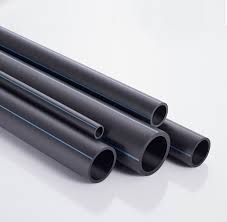Dec . 26, 2024 00:23 Back to list
High Density Polyethylene Dual Wall Pipe for Reliable Drainage Solutions
The Advantages of Dual Wall HDPE Pipe in Modern Infrastructure
Dual wall HDPE (High-Density Polyethylene) pipes have become a popular choice in various infrastructure applications, owing to their unique design and the benefits they offer. Comprising an inner and outer wall, these pipes are engineered to provide enhanced strength, durability, and reliability, making them ideal for various demands in construction projects, drainage systems, and other applications.
Structure and Design
The structure of dual wall HDPE pipes consists of an inner smooth wall, which allows for a low-friction flow of liquids or gases, and an outer corrugated wall that offers superior strength and impact resistance. This combination of features ensures that the pipes are not only lightweight but also highly robust. From stormwater management systems to sewer systems, the dual wall design helps accommodate various environmental conditions without compromising performance.
Lightweight and Easy to Install
One of the primary advantages of dual wall HDPE pipes is their lightweight nature compared to traditional piping materials like concrete or metal. This makes transportation and installation more cost-effective and efficient. Workers can handle the pipes with greater ease, reducing the time and labor involved in the installation process. Their flexibility also allows for easier alignment and integration into existing systems, making retrofitting projects simpler and more efficient.
Corrosion Resistance
Unlike metal pipes, which are susceptible to rust and corrosion, dual wall HDPE pipes are impervious to many chemical reactions. This resistance to corrosion extends the lifespan of the pipes and decreases the likelihood of costly repairs or replacements due to material degradation. With historic exposure to harsh environments, dual wall HDPE pipes maintain their integrity over time, making them a smart investment for long-term applications.
dual wall hdpe pipe product

Environmental Benefits
The use of dual wall HDPE pipes contributes positively to environmental sustainability. The production process of HDPE requires less energy than that of other piping materials, such as PVC (Polyvinyl Chloride) or concrete, which reflects a lower carbon footprint. Additionally, being recyclable, HDPE pipes can be reused, further reducing waste in landfills. Their durability and longevity also minimize the environmental impact related to pipe replacements and maintenance.
Applications Across Industries
The versatility of dual wall HDPE pipes allows them to be utilized across various industries. In the municipal sector, they serve effectively in stormwater management systems, sewage systems, and culverts. The agricultural industry employs them for irrigation and drainage, while the mining sector uses them for effluent and ventilation applications. Given their performance characteristics, these pipes are increasingly sought after in both urban and rural planning contexts.
Compliance and Standards
Dual wall HDPE pipes adhere to rigorous industry standards and regulations, ensuring their reliability and safety in various applications. They comply with ASTM (American Society for Testing and Materials) and AASHTO (American Association of State Highway and Transportation Officials) guidelines, which govern the performance and quality of piping materials. By choosing HDPE, project managers and engineers can have confidence in the product’s integrity and its ability to meet stringent performance metrics.
Conclusion
In a rapidly evolving construction landscape, dual wall HDPE pipes stand out as a solution that meets both economic and environmental needs. Their long lifespan, lightweight nature, and resistance to corrosion make them a preferred choice for many engineering applications. As communities and industries look toward more sustainable practices, dual wall HDPE pipes offer a compelling case for future infrastructure development. The ongoing adoption of HDPE technology undoubtedly signifies a shift towards more efficient and resilient systems tailored for modern challenges.
-
High-Quality PVC Borehole Pipes Durable & Versatile Pipe Solutions
NewsJul.08,2025
-
High-Quality PVC Perforated Pipes for Efficient Drainage Leading Manufacturers & Factories
NewsJul.08,2025
-
High-Quality PVC Borehole Pipes Durable Pipe Solutions by Leading Manufacturer
NewsJul.08,2025
-
High-Quality PVC Borehole Pipes Reliable PVC Pipe Manufacturer Solutions
NewsJul.07,2025
-
High-Quality UPVC Drain Pipes Durable HDPE & Drain Pipe Solutions
NewsJul.07,2025
-
High-Quality Conduit Pipes & HDPE Conduit Fittings Manufacturer Reliable Factory Supply
NewsJul.06,2025

